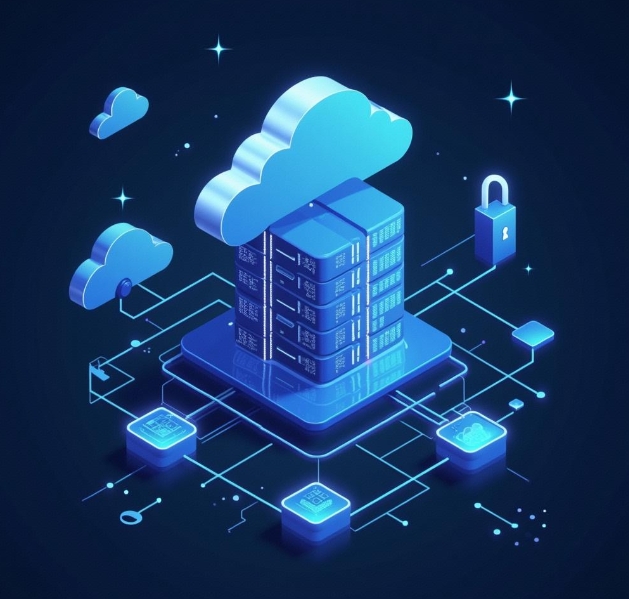Cloud Computing Security Challenges: How to Protect Data Privacy and Security
- latest articles
- 1.DApp Development & Customization: Merging Diverse Market Needs with User Experience 2.Analysis of the Core Technical System in DApp Project Development 3.How to achieve cross-chain interoperability in Web3 projects? 4.How does the tokenization of points reconstruct the e-commerce ecosystem? 5.How to Set and Track Data Metrics for a Points Mall? 6.What is DApp Development? Core Concepts and Technical Analysis 7.Inventory of commonly used Web3 development tools and usage tips 8.Development of a Distribution System Integrated with Social E-commerce 9.Six Key Steps for Businesses to Build a Points Mall System 10.What is DApp Development? A Comprehensive Guide from Concept to Implementation
- Popular Articles
- 1.Future Trends and Technology Predictions for APP Development in 2025 2.Analysis of the DeFi Ecosystem: How Developers Can Participate in Decentralized Finance Innovation 3.From Zero to One: How PI Mall Revolutionizes the Traditional E-commerce Model 4.DAPP Development | Best Practices for Professional Customization and Rapid Launch 5.Recommended by the Web3 developer community: the most noteworthy forums and resources 6.From Cloud Computing to Computing Power Leasing: Building a Flexible and Scalable Computing Resource Platform 7.How to Develop a Successful Douyin Mini Program: Technical Architecture and Best Practices 8.Shared Bike System APP: The Convenient Choice in the Era of Smart Travel 9.How to Create a Successful Dating App: From Needs Analysis to User Experience Design 10.From Design to Development: The Complete Process of Bringing an APP Idea to Life
As a revolutionary technology, cloud computing has profoundly transformed how we manage computing resources by entrusting computation, storage, and networking to cloud service providers, allowing users to access these resources on-demand via the internet. With the rapid development and widespread adoption of cloud computing, an increasing number of individuals, businesses, and government agencies are migrating their data and applications to cloud platforms. However, the ensuing security issues in cloud computing have become a challenge that cannot be overlooked, particularly concerning data privacy and security. This article will delve into the security challenges faced by cloud computing and how to effectively protect data privacy and security.
I. Background of Cloud Computing Security Challenges
The advantages of cloud computing are evident: businesses and users can enjoy efficient and flexible services through cloud platforms while reducing their reliance on traditional IT infrastructure. However, cloud computing also introduces many unprecedented security challenges. First, data is stored and transmitted in the cloud, and cloud service providers often bear significant responsibility for data management and protection. Second, the shared model of cloud computing allows multiple users' resources to interact on the same platform, increasing the risk of data breaches and malicious attacks. Additionally, the complexity of data centers and network architectures in cloud computing makes security management more challenging.
II. Key Challenges in Data Privacy and Security
Data Breaches and Unauthorized Access Data breaches are one of the most severe security risks in cloud computing. Since cloud platforms are typically managed by third-party service providers, users cannot directly control their data storage and access. This makes it possible for cloud service providers, hackers, or internal employees to access, steal, or leak sensitive information without authorization. As businesses and individuals continue to upload data to the cloud, the potential risks associated with data breaches are constantly increasing.
Authentication and Access Control Issues In cloud computing environments, authentication and access control between users and devices are particularly critical. Although most cloud service providers offer authentication mechanisms such as usernames and passwords, multi-factor authentication, etc., attackers may still gain unauthorized access through brute force attacks, phishing, or other methods due to poor password management or weaknesses in authentication mechanisms, leading to illegal operations on data.
Challenges in Data Backup and Recovery Although cloud service providers typically offer data backup and disaster recovery services, these services are not 100% reliable. Physical hardware failures in cloud platforms can result in data loss or corruption. Ensuring secure data backups and the ability to quickly recover in the event of an incident has become a major challenge in cloud computing security.
Compliance and Legal Issues Compliance in data storage and processing is another significant challenge for cloud computing. Different countries and regions have varying legal and regulatory requirements for data privacy and security, and cloud service providers must adhere to these regulations. When using cloud services, businesses must ensure compliance in their data storage and processing to avoid data breaches and fines resulting from legal issues.
Resource Contention in Shared Environments The shared model of cloud computing means that multiple customers' data and applications may share the same physical hardware resources. This shared environment increases the risk of indirect data leakage. For example, through side-channel attacks, hackers might obtain data from one tenant's virtual machine belonging to another tenant. Therefore, ensuring data isolation and preventing data leakage between different tenants has become a major challenge in cloud computing security.

III. How to Protect Data Privacy and Security?
Encryption Technology Encryption is a crucial means of protecting data privacy and security. In cloud computing environments, businesses and users can employ end-to-end encryption to safeguard data. Whether during transmission or storage in the cloud, data can be protected using encryption algorithms, ensuring that even if data is stolen or leaked, it cannot be read by unauthorized individuals. Common encryption technologies include AES (Advanced Encryption Standard) and RSA public-key encryption.
Additionally, data encryption can be applied at the transport layer (e.g., SSL/TLS protocols) and the storage layer (e.g., disk encryption), ensuring comprehensive protection at every stage of cloud computing.
Multi-Factor Authentication (MFA) To prevent identity theft and unauthorized access, cloud service providers and users can implement multi-factor authentication (MFA). MFA requires users to provide multiple forms of verification, such as passwords, SMS codes, or fingerprint recognition, to successfully access cloud services. By adding layers of verification, MFA significantly enhances the security of identity authentication.
Data Isolation and Virtualization Technology Cloud service providers can use virtualization technology to achieve data isolation, ensuring that data from different tenants cannot access each other. Virtualization technology partitions computing resources into multiple virtual machines, each with its own operating system and storage environment, thereby mitigating the risk of data leakage between users. Furthermore, cloud platforms can utilize technologies like Virtual Private Networks (VPNs) to enhance security during data transmission.
Compliance Auditing and Monitoring When selecting cloud services, businesses should ensure that the provider offers compliance auditing and monitoring capabilities. Through regular security audits and log monitoring, companies can promptly identify potential security vulnerabilities and violations, taking appropriate remedial actions. At the same time, cloud platforms must comply with various industry regulations, such as GDPR and HIPAA, to ensure that data processing and storage meet legal requirements.
Data Backup and Disaster Recovery Although cloud platform hardware is typically highly reliable, businesses still need to ensure regular backups of critical data and develop comprehensive disaster recovery plans. While storing data in the cloud, companies can back up data to multiple geographically dispersed cloud data centers, reducing the risk of data loss due to failures in a single location.
Choosing a Reliable Cloud Service Provider Selecting a reputable cloud service provider is crucial for ensuring data security. When making a choice, businesses should carefully evaluate the provider's security measures, including data encryption, access control, and authentication mechanisms. Additionally, verifying whether the provider holds relevant security certifications (such as ISO 27001) can help ensure data security.

IV. Conclusion
Cloud computing technology offers convenient and efficient computing resources and services, but its security issues, particularly concerning data privacy and security, remain key challenges in the development of cloud computing. By adopting measures such as encryption, multi-factor authentication, virtualization, and compliance auditing, businesses and individuals can effectively reduce the risks of data breaches and unauthorized access. At the same time, selecting a reliable cloud service provider and developing a robust disaster recovery plan are essential steps to ensure data security.
-

Applications and Challenges of Cloud Computing in the Internet of Things (IoT)
With the continuous advancement of information technology, cloud computing and t···
-

Integration of Cloud Computing and Artificial Intelligence: Enhancing Intelligent Applications
With the rapid advancement of technology, cloud computing and artificial intelli···
-

Data Security and Privacy Protection in Cloud Computing Applications
With the continuous advancement of information technology and the rapid developm···

 Blockchain
Blockchain










